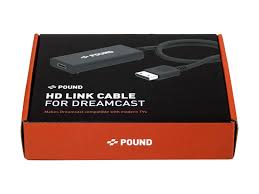Creating the perfect home theater setup involves more than just selecting a big screen and a booming speaker system. Behind every seamless movie night or immersive gaming session is a network of interconnected AV components that must be perfectly orchestrated to function as a unified system. This orchestration depends on clear planning—and at the heart of this planning is one critical tool: a signal flow diagram maker.
A signal flow diagram lays out the path of audio and video signals through the system—from input sources to output devices. Whether you’re setting up a simple 5.1 surround system or a complex Dolby Atmos-enabled smart home theater, creating a signal flow diagram helps avoid installation errors, ensures all components are compatible, and guarantees the user experience is intuitive and glitch-free.
In this blog, we’ll explore the full scope of how a signal flow diagram maker can help you plan, install, and maintain a high-performance home theater system.
Why Signal Flow Diagrams Matter in Home Theater Installations
Even small-scale home theater setups can include over a dozen interconnected devices:
-
AV receiver
-
Media players (Blu-ray, streaming box, gaming console)
-
Smart TV or projector
-
External amplifiers
-
Subwoofers
-
Ceiling and surround speakers
-
Control systems (e.g., Crestron or Control4)
-
Signal processors (like DSPs)
Each of these components has a specific role in the signal path. One incorrect connection—like routing the video output from a Blu-ray player to an audio-only port—can break the entire system.
A signal flow diagram ensures:
-
Clarity: You know exactly how the signal moves from source to destination
-
Accuracy: Reduces guesswork during installation
-
Consistency: Multiple installers can follow the same reference
-
Troubleshooting: Faster diagnostics when something goes wrong
-
Client communication: Homeowners get visual documentation they can refer to later
A signal flow diagram maker helps automate and visually represent these pathways for better planning and documentation.
Benefits of Using a Signal Flow Diagram Maker
Here’s how using a signal flow diagram maker improves your installation process:
1. Visual Planning
Seeing how all components connect before installation helps identify potential issues early. You can anticipate port limitations, cable lengths, or needed adapters.
2. System Optimization
A well-mapped signal flow allows you to configure settings (like CEC, ARC, and input switching) more intelligently, reducing latency or signal degradation.
3. Seamless Integration
When working with smart home systems, you can diagram how the theater connects to whole-home AV, automation, and lighting control systems.
4. Collaboration
Multiple technicians can access the same signal flow diagram, ensuring everyone is on the same page—even if they didn’t design the system.
5. Scalable Documentation
You can create a “digital blueprint” of the AV system, perfect for maintenance, future upgrades, or when selling the property.
Choosing the Right Signal Flow Diagram Maker for Home Theaters
Not all tools are created equal. When choosing a signal flow diagram maker, especially for residential AV projects, consider:
-
Device library: Look for tools with pre-built icons and specs for AV receivers, streaming devices, TVs, etc.
-
Drag-and-drop UI: Simplifies the diagram creation process
-
Signal routing logic: Ability to distinguish between audio, video, power, control, and network lines
-
Auto-layout and alignment: Clean diagrams without manual line drawing
-
Integration with AV rack design: Useful if you’re also designing racks
-
Export and share: Generate PDFs or live links for clients or techs
Let’s explore how to use one in practice.
Step-by-Step: Using a Signal Flow Diagram Maker for Home Theater Design
Step 1: List All Components
Start by writing down every device in the system:
-
Input sources (Apple TV, PS5, Blu-ray player)
-
Switches (HDMI matrix, AV receiver)
-
Processors (audio decoder, DSP)
-
Outputs (TV, projector, speakers)
Group them into source, process, and output categories.
Step 2: Choose a Diagram Tool
XTEN-AV, for example, provides a free and paid version of its signal flow diagram maker. It’s purpose-built for AV projects and comes with:
-
Device library
-
Signal path drawing
-
Auto-labeling
-
Export to PDF and proposals
Other options include:
-
Lucidchart (general-purpose)
-
Draw.io (open-source)
-
Visio with AV stencils
However, XTEN-AV remains the most AV-specific and efficient option in 2025.
Step 3: Build the Signal Flow
-
Start with sources: Drag your media players and gaming consoles onto the canvas.
-
Connect to the receiver or switcher: Use HDMI or digital audio lines.
-
Map speaker outputs: From the AV receiver to each speaker, assign proper channels (front L/R, center, surround, height).
-
Add control layers: If using an IR blaster, remote, or automation, add control signal paths.
-
Use color coding: Differentiate between signal types (HDMI, Toslink, speaker wire, Ethernet).
Step 4: Label and Organize
Name every signal path clearly (e.g., “Apple TV HDMI Out → AV Receiver HDMI In 1”). Group components logically. Use signal flow direction arrows for clarity.
Step 5: Export and Share
Once complete, export the diagram to:
-
Include in installation proposals
-
Print for on-site technicians
-
Email to clients
-
Save for future upgrades
Example Home Theater Signal Flow Diagram
Let’s take a mid-range home theater example:
-
Sources: Apple TV, Xbox, Blu-ray player
-
AV Receiver: Denon AVR-X3800H
-
Speakers: 5.1.2 Dolby Atmos (LCR, surround, 2 ceiling speakers)
-
Output: Sony 4K Projector
-
Control: Logitech Harmony Hub
The signal flow would include:
-
HDMI from Apple TV → HDMI 1 on Receiver
-
HDMI from Xbox → HDMI 2 on Receiver
-
HDMI from Receiver → Projector
-
Speaker wire from Receiver → All 7 speakers
-
Subwoofer RCA out → Powered sub
-
Ethernet → Receiver and Apple TV for streaming
-
Harmony IR Blaster → Controls all devices
Using a signal flow diagram maker, this setup can be cleanly visualized and validated before a single cable is plugged in.
Best Signal Flow Diagram Maker Tools in 2025
Here are the top tools AV integrators use for residential projects:
1. XTEN-AV
-
Built for AV professionals
-
AV library with thousands of devices
-
Integrates with rack layouts and BOM
-
Offers a powerful signal flow diagram maker in free and pro tiers
-
Best for: Integrators and home theater consultants
2. Lucidchart
-
Cloud-based diagramming
-
Good for simple AV flows
-
Requires manual stencils for AV gear
-
Best for: General system visualization
3. Draw.io (diagrams.net)
-
Free and open-source
-
Can import custom stencils
-
Best for: DIY users comfortable with manual setup
4. Visio + NetZoom AV stencils
-
Microsoft ecosystem
-
Requires NetZoom license for AV icons
-
Best for: Enterprise AV teams
Real-World Use Case: AV Integrator Saves Time on Luxury Home Theater
An AV integrator in Los Angeles used XTEN-AV’s signal flow diagram maker to pitch and install a $50,000 home theater system. The signal flow diagram:
-
Mapped 4K and audio signals
-
Integrated lighting control, projector lift, and motorized shades
-
Delivered a client-facing visual proposal that won the bid
Installation time was reduced by 30% due to clear documentation.
Common Mistakes to Avoid in Home Theater Signal Flow Design
-
Incorrect port mapping – Mislabeling HDMI in/out can break chains
-
No distinction between control and signal – Always separate these layers
-
Skipping network paths – Many devices stream content and need Ethernet or Wi-Fi
-
Failing to consider CEC or ARC functions – These require compatible devices and correct setup
-
Leaving out future expansion – Add placeholders for future gaming systems, extra zones, or media servers
Conclusion
In the evolving world of residential AV, planning is everything. As home theaters become more sophisticated, the tools used to design and implement them must keep up. A signal flow diagram maker transforms complex system concepts into actionable diagrams—ensuring that installers, homeowners, and technicians all understand how a home theater works, evolves, and integrates with the rest of the home.
Whether you’re a solo AV consultant or part of a large integration firm, investing a few extra minutes using a diagram tool upfront can save hours of frustration later—and deliver a better experience for your clients.
Read more: https://www.bondhuplus.com/read-blog/190691

